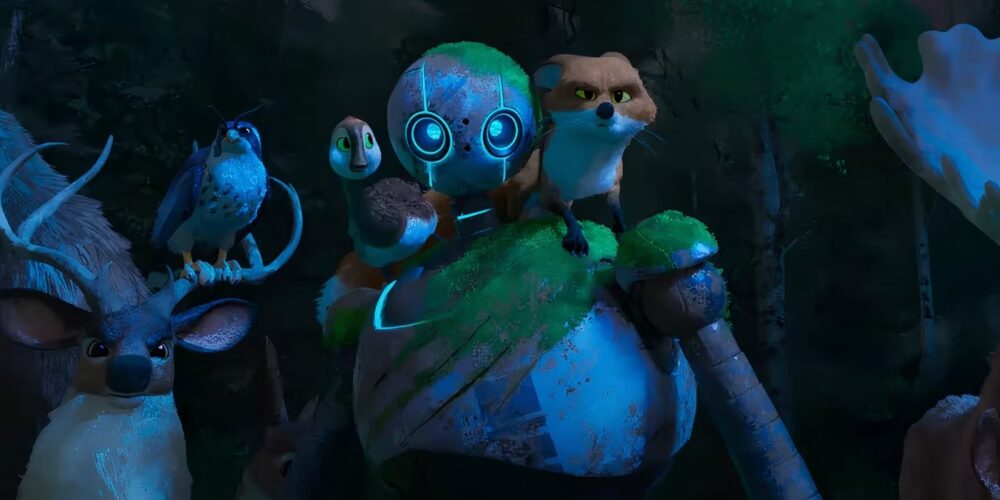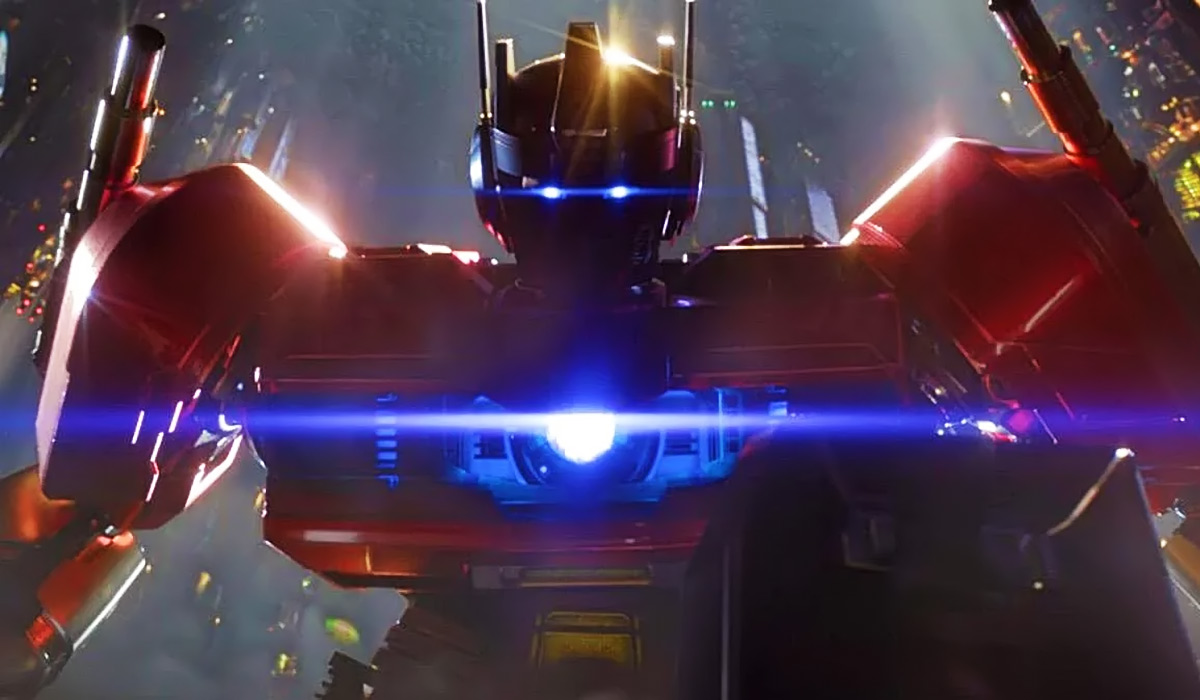Roz, a robot programmed to be the perfect assistant to humans, finds herself shipwrecked on an island with no inhabitants outside of its woodland creatures. Confused as to how she got there, Roz stumbles around desperately looking for someone to serve, unwittingly crushing a goose’s nest, killing the mother and destroying all but one of its eggs. Now with a newfound purpose, Roz takes on the position of raising the orphaned gosling as her own, eventually choosing to name it Brightbill. But the baby has been born with a physical disability, and unless Roz can find a way to teach him how to fly south, Brightbill will freeze to death during the rapidly approaching winter.
Since this is an animation website, you’ve probably become aware of the hype surrounding The Wild Robot. Ever since its teaser was first released in the spring, the internet has been excited for it, eager to proclaim it an instant classic based off of its visuals alone. Universal Pictures–which owns DreamWorks Animation–clearly became alert to this, amplifying the marketing and essentially launching an early Oscar campaign.

With such lofty expectations, does The Wild Robot deliver on its perceived promises? The simple answer is an easy yes. In fact, this has been receiving such unanimous praise from (almost) everyone that I almost find it hard to review without coming across as white noise. But I’ll try my best.
Before we get to the aforementioned animation, let’s discuss the narrative structure, which is actually where The Wild Robot takes its biggest creative risks. This is really unlike any movie that DreamWorks has ever produced. For the first act, Roz wanders her newfound surroundings, attempting in vein to make a connection, and frightening almost everyone she meets. The slow pacing is obviously deliberate, but fortunately, trust is placed on the audience to be patient here. Like Pixar’s WALL-E–of which comparisons are perhaps inescapable–it knows how to take the cinematic equivalent of a deep breath.
Like the natural setting it takes place in, The Wild Robot almost subconsciously asks for the viewer to be quiet, lest they disturb the wildlife and scare it off into hiding. I’m aware that might sound like a weird statement, and don’t worry, this is still a movie that has a lot of laughs. Veteran director Chris Sanders knows how to properly balance this sort of thing by now, although the comedy is less subversive than Lilo & Stitch, which had an edge to it even if it was a blunt one. Simply put, even more so than DreamWorks Animation’s Trolls movies, The Wild Robot is almost daringly non-cynical, a completely genuine tale that isn’t afraid to get a little bleak once in a while.
But let’s talk about that animation. You’ve all heard it from other reviews, but The Wild Robot looks absolutely beautiful. Every single aspect of the backgrounds was painted by hand digitally (a technique first used on Disney epics like Tarzan and Treasure Planet, but one that hasn’t become common practice since then), creating an atmosphere that could even be described as spiritual. From the snowflakes which float around until they land on an animal’s fur, to the fire which dominates the story’s climax, The Wild Robot feels like a children’s book illustration come to life. At the risk of sounding like a critical blurb for a DVD cover, the movie really is unlike anything you’ve ever seen before.

It’s also exceptionally directed. During the standout emotional sequence, a majestic montage in which Roz does everything within her power to give Brightbill the gift of flight, the sensation is simply exhilarating, making the audience feel as though they are soaring through the sky too. Sanders, of course, is no stranger to this, having been a co-director on the first How to Train Your Dragon, yet he still proves he has a few new tricks up his sleeve. I’d imagine Disney has to regret firing the guy by now.
However, I don’t want to shortchange the voice cast. In my recent Transformers One write-up, I praised Brian Tyree Henry’s frightening yet empathetic take on Megatron. I now must give similar applause to Lupita Nyong’o, who really does astonish as Roz. This is the sort of protagonist that’s potentially incredibly difficult to nail. The voice has to be emotional without actually being emotional, if you follow what I’m saying, and Nyong’o knows exactly what she’s doing, playing Roz like a confused child lost at the mall. There are the subtlest hints of human vulnerability as she gradually discovers what it means to actually emote. You grasp the character’s pain even as she’s unable to comprehend such a concept.
The rest of the ensemble–including Pedro Pascal, Mark Hamill, and Catherina O’Hara–all do great work as well, but I’ll give a special shout-out to Bill Nighy, who has a small but important part as an elderly goose called Longneck. Nighy is someone who remains a brilliant character actor who is also inexplicably underappreciated, and I’m always glad when he shows up in anything. For The Wild Robot, Nighy’s vocals provide a commanding, reassuring warmth, treating Roz and Brightbill with unrestrained kindness when no one else will.
And unrestrained kindness, really, is the underlying theme behind everything in The Wild Robot. It’s a wonderful movie with positive messaging which, like the best animated films, both kids and adults can benefit from. I’m afraid I did come across as white noise here after all (call it the insecurities of a writer), but you know what? The popular opinion stands here. Go see The Wild Robot.
 | The Wild Robot Universal Pictures and DreamWorks Animation September 27, 2024 102 minutes Rated PG Directed by Chris Sanders | |










